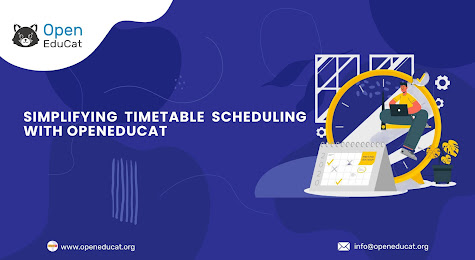Creating a seamless, conflict-free timetable has always been one of the more challenging aspects of academic planning. Juggling classroom availability, teacher schedules, subject requirements, and student groupings can quickly become a logistical nightmare — especially for large institutions. Fortunately, modern ERP (Enterprise Resource Planning) platforms are transforming the way educational institutions approach this essential task.
In this blog, we’ll explore how ERP platform simplify timetable scheduling, boost efficiency, and bring flexibility to academic planning.
The Challenge of Traditional Timetabling
Before ERP platforms, timetable scheduling was often a manual, error-prone process. Spreadsheets and printed schedules ruled the day, but they came with limitations:
- Time-consuming processes that required constant revisions.
- Increased likelihood of human error — from double-booked classrooms to overlapping teacher schedules.
- Inflexibility, especially when last-minute changes were needed.
- Limited scalability, which made it difficult to manage multiple departments or campuses.
As education evolves, so must the systems that support it.
How ERP Platforms Streamline Timetable Scheduling
Modern ERP platforms designed for educational institutions come equipped with smart scheduling tools. Here’s how they make life easier:
1. Automated Scheduling
ERP systems can generate timetables automatically based on predefined rules — like teacher availability, subject hours, and classroom capacity. This drastically reduces manual workload while ensuring schedules are logically optimized.
2. Conflict Detection
Advanced algorithms flag potential conflicts before they happen. Whether it’s a teacher assigned to two classes at once or a classroom double-booked, the system catches and suggests fixes instantly.
3. Drag-and-Drop Flexibility
Need to move a class? Most ERP platforms feature intuitive interfaces that allow administrators to adjust schedules with simple drag-and-drop actions, making changes quick and visual.
4. Multi-Department Coordination
Centralized data ensures that scheduling across departments, grade levels, or even campuses is synchronized and coherent. This is particularly valuable for institutions with shared resources.
5. Real-Time Updates
Changes are reflected in real time across the system. Teachers, students, and staff receive instant notifications through integrated communication tools or mobile apps.
6. Customizable Templates
Whether it’s a weekly rotating schedule, semester-based structure, or modular block system, ERP platforms offer templates to match different academic models.
Benefits Beyond Scheduling
Timetable management through ERP platforms also unlocks broader institutional benefits:
- Improved transparency: Everyone sees the same schedule, reducing confusion and communication gaps.
- Data-driven insights: Reports and analytics help optimize teacher workloads and classroom utilization.
- Better student experience: With organized and balanced schedules, students can focus more on learning and less on logistics.
- Time and cost savings: Automation reduces administrative hours and minimizes scheduling mistakes that can be costly to correct.
Final Thoughts
Timetable scheduling doesn’t have to be a stressful, weeks-long endeavour. By leveraging ERP platforms tailored for education, institutions can simplify the process, eliminate conflicts, and free up valuable time for more strategic planning. In a world where adaptability and efficiency are key, smart scheduling is no longer a luxury — it’s a necessity.
Ready to streamline your school operations? Learn how OpenEduCat can support your goals — get in touch with our team today.

